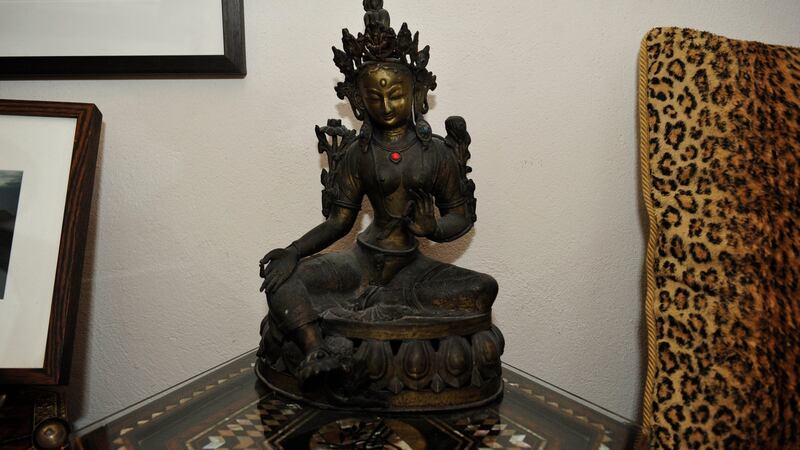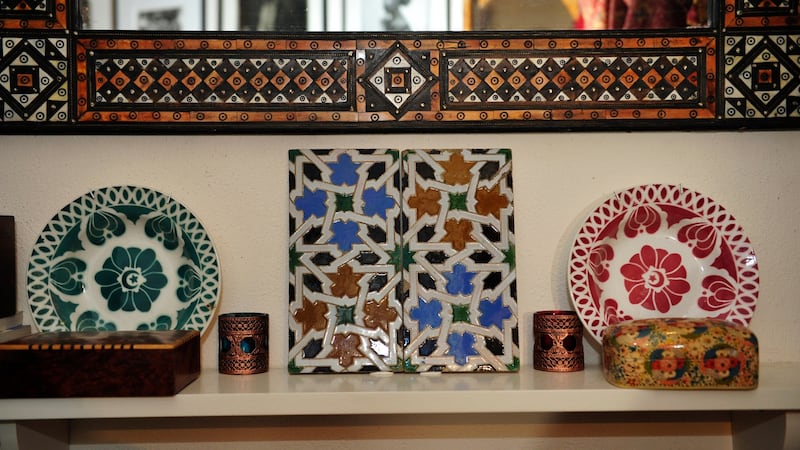One of Ireland's most admired fashion designers in the 1980s popularly known for his stylish rainwear, Mallow-born Michael Mortell became an inveterate collector of fine art and antiques while sourcing fabrics in Paris and London.
Known for an unerring eye, he eventually quit the fashion business to become an interior designer and is now the country’s premier dealer in fine pieces of mid-century modern furniture, lamps, mirrors, chairs and objects d’art.
He opened his first shop in Dame Court in 2008 and two years ago moved to a premises in Francis Street, Dublin. He lives in a city-centre apartment.


Describe your style in interiors
For me style is understanding the essence of the look one is trying to achieve, be it Georgian, mid-century or minimalist. Interiors have to have an aesthetic appeal based on proportion, understanding of colour, distribution of furniture and attention to detail, and so on. When put together their appeal should be sophisticated and stimulating.
For me the work of Jacques Grange (a French interior designer) would be a prime example of this. Having been in a number of homes he has worked on, I have been overawed by his understanding of his metier.
Which room in your home do you most enjoy?
It has to be the Moroccan room because I feel wonderfully cocooned in this other world created from pieces I have collected and brought home from Morocco, India and Turkey.
I have always loved the exotic nature of these cultures. There are rugs bartered with a trader in Marrakesh and carpets on the floor from a village in India.
The room is not reflective of the rest of the apartment, but it is my retreat, and where my books are, and where I feel secure.
What items do you love most?
I love a tile that I brought back from Marrakesh, and while it is a humble object I find it aesthetically very beautiful. I bought it from a small ceramic workshop and at the time was told it was left over from work on one of the royal Moroccan palaces.
Other items are a pair of mid-century Italian armchairs which I bought recently and a bronze Chinese deity circa 18th century bought in an antique shop in Oporto 25 years ago.
Who is your favourite designer? Do you own any of their work?
At the moment it would be Gio Ponti, the 1950s Italian designer. I love contemporary simplicity with a nod to neo-classicism. When I buy for the shop everything is bought with the eye and is very representative of a high standard of the period. Another would be Ruhlman, the great Art Deco furniture designer and architect. Unfortunately I have no pieces by either at the moment.
What artists do you admire?
My taste ranges widely, from Monet to Modigliani. One of the greatest was Turner; I think his later work was the beginning of the modernist period.
Biggest interior turnoff?
I think the misunderstanding of the word eclectic because it is bandied around constantly and people don’t realise that eclecticism is the most difficult style to execute. At least with Georgian, Victorian or Art Nouveau there are precise rules and precise pieces of furniture, whereas eclecticism has no rules. As it is a combination of different periods, it relies on a very precise and sure eye.
Which travel destination stands out?
My first trip to India more than 30 years ago because aesthetically it was quite overpowering and stimulating, the poverty notwithstanding.
If you had €100,000 to spend on anything for the home, what would it be?
I would spend it on so many pieces that I want; I would not buy any one item for €100,000, but it would be five great pieces of mid-century Italian furniture and lighting, a Mayodon ceramic, a Lalique vase.












